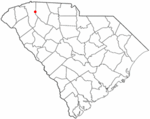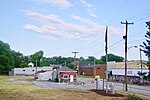BMW in the United States

BMW cars have been officially sold in the United States since 1956 and manufactured in the United States since 1994. The first BMW dealership in the United States opened in 1975. In 2016, BMW was the twelfth highest selling brand in the United States. The North American headquarters for BMW is located at 300 Chestnut Ridge Road, Woodcliff Lake, Bergen County, New Jersey.As of 2019 the BMW Spartanburg manufacturing plant in Greer, South Carolina, had the highest production volume of the BMW plants worldwide, producing approximately 1,500 vehicles per day. The models produced at the Spartanburg plant are the X3, X4, X5, X6, X7, and XM SUV models. In addition to the South Carolina manufacturing facility, BMW's North American companies include sales, marketing, design, and financial services operations in the United States, Mexico, Canada, and Latin America. The North American headquarters for its large financial services subsidiary is located in Dublin, Ohio and is responsible for the captive lending for BMW automotive, BMW Motorsport, and Rolls-Royce cars, when buyers lease the vehicles or decide to finance directly with the company.
Excerpt from the Wikipedia article BMW in the United States (License: CC BY-SA 3.0, Authors, Images).BMW in the United States
Highway 101, Greer
Geographical coordinates (GPS) Address Nearby Places Show on map
Geographical coordinates (GPS)
| Latitude | Longitude |
|---|---|
| N 34.893055555556 ° | E -82.178888888889 ° |
Address
BMW Manufacturing
Highway 101 1400
29651 Greer
South Carolina, United States
Open on Google Maps










